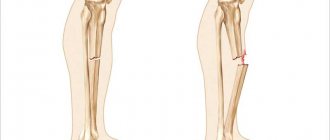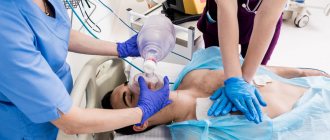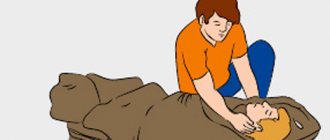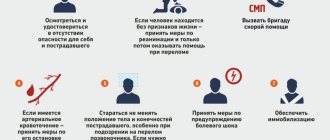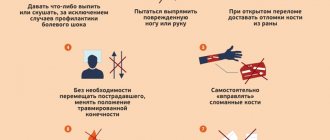Why does a person faint and what is this condition? The brain cannot function normally without a constant flow of blood and nutrients. A sudden disruption of this process causes severe oxygen starvation of brain tissue. The result is a short-term loss of consciousness - usually it lasts a few seconds. The repetition of these cases indicates cardiac and neurological problems in the body, and the causes of fainting are varied. There is no need to delay their diagnosis. Not only fainting, but also pre-fainting conditions should alert you and lead you to a qualified specialist. Now you can undergo a consultation and a set of preparatory examinations when registering for a course of enhanced external counterpulsation or shock wave therapy of the heart absolutely free of charge!
Promotion
Just until the end of autumn, undergo a free consultation and a set of preparatory examinations* when registering for a course of enhanced external counterpulsation or shock wave therapy of the heart.**
Send a request
* Check the details of the Promotion by phone. **Has contraindications; consultation with a doctor is required.
Enhanced external counterpulsation (EECP) Cardiac shock wave therapy (SWTS)
Hurry up to apply, the promotion period is limited.
Symptoms of loss of consciousness
Fainting and loss of consciousness - what's the difference? There is no difference, since fainting is a loss of consciousness for a short time (usually up to 1 minute). The main precursor can be called a pre-fainting state. And speaking about the symptoms of loss of consciousness, most often they mean the symptoms of a pre-fainting state:
- a feeling of lightheadedness and nausea sets in;
- the heart begins to beat quickly;
- circles and “spots” appear before the eyes;
- vision loses clarity;
- a strong pounding appears in the temples;
- cold sweat is produced profusely;
- there is a feeling of imminent fall.
It is at this moment that emergency measures must be taken to prevent loss of consciousness. Timely provision of first aid is also extremely important.
However, fainting can occur quite suddenly, without this “warning”. Its symptoms cannot go unnoticed by others:
- a person suddenly loses his balance and falls in a “sheaf”;
- loss of consciousness occurs;
- the skin becomes pale;
- Limbs may twitch and urine may leak involuntarily.
Having regained consciousness, the person feels overwhelmed and experiences severe drowsiness.
Clinical picture
Fainting is characterized by rapid development. Loss of consciousness occurs rapidly. Sometimes patients don’t even have time to realize that something is wrong. In other cases, typical symptoms of presyncope are observed.
Fainting is characterized by the following clinical manifestations:
- lack of consciousness;
- weak pulse;
- decreased breathing rate (bradypnea);
- lack of pupillary reaction to light;
- the patient comes to his senses within 1-5 minutes (if fainting lasts longer, this is serious);
- after fainting, pallor and weakness persist;
- for some time afterward, low blood pressure is observed;
- Dizziness and nausea may occur.
In most cases, syncope occurs when the patient is in an upright position. If the patient loses consciousness while lying down, then it is necessary to suspect a serious somatic pathology.
Causes of fainting
There are many reasons why people faint, and almost all of them are associated with a sharp decrease in the intensity of blood flow in the brain. Among the most common causes of loss of consciousness are disorders of the nervous system (50% of all cases) and heart pathologies (25%). Also, immediately before unconsciousness may:
- vascular function is impaired due to a pre-stroke condition, atherosclerosis;
- increased pressure in the vessels of the skull due to hydrocephalus, tumor, hemorrhage;
- the amount of sugar and oxygen in the body decreases, which occurs with kidney pathologies, hypoglycemia, anemia;
- decreased circulating blood volume due to bleeding.
General symptoms
In a state of twilight disorder of consciousness, whatever type it may be, contact with the patient is impossible, since he is detached from the real world, does not perceive it partially or completely. His consciousness suddenly seems to turn off. He is disoriented to varying degrees in the situation, time, people, place. His thinking process is disrupted, his judgments are incoherent or completely absent.
It is difficult to distinguish a sick person from a healthy person by appearance, since he behaves quite normally and is capable of performing quite complex actions. However, as soon as you begin to communicate with him, it immediately becomes clear that the individual cannot say either his own name, the names of loved ones, or the date where exactly they are. Although his speech may be correct from a grammatical point of view, he cannot carry on a conversation, he talks to himself, does not answer questions and does not expect an answer to his own.
The behavior is usually aggressive and poses a danger to others.
After emerging from such a state, the patient remembers poorly or does not remember at all what happened to him and what he did.
Causes of frequent fainting
The causes of frequent fainting are classified into a separate group. They are usually associated with various mental disorders that manifest themselves periodically, for example, hysterical neurosis. A sudden disruption in blood flow can occur with epilepsy. Often first aid for fainting is necessary for people with low blood pressure and diabetes. A drop in vascular tone can cause fatigue, neurosis, and even a simple transition from a sitting state to a standing state and vice versa.
There are also specific causes in women and men that lead to short-term loss of consciousness.
Treatment methods
For whatever reason a person loses consciousness, the first thing to do is call a doctor. But while the ambulance is on the way, you need to provide first aid to the victim. You need to act quickly and not panic.
What should you do if a person suddenly faints?
- The victim should be laid on his side and his head tilted back slightly.
- If necessary, remove tight clothing and splash cold water on his face.
- In the room, open all the windows and try to bring ammonia to your nose.
- It is advisable to raise the patient's legs or sit him down with his head bowed low.
- If a person has regained consciousness, under no circumstances should you allow him to get up quickly.
If it occurs due to a sharp drop in blood pressure, which is the most common cause, then the victim’s legs can be wrapped in an elastic bandage - this will disperse stagnant blood in the vessels.
In any case, an accurate diagnosis can be made by a doctor who will conduct an examination and prescribe the necessary treatment. The specialists of our center will provide you with qualified assistance!
First aid for fainting:
- position the patient in such a way as to improve blood supply to the head - raise your legs and try to lower your head a little lower than your body;
- loosen the patient's collar, open the window in the room for air access;
- Sprinkle water on your face, apply ammonia to your nostrils;
- the patient has come to his senses - offer him something sweet;
- If possible, give an intravenous injection of glucose - this will improve blood circulation.
If help for loss of consciousness is provided in a timely manner, the person will feel better within a few minutes.
Urgent Care
The danger of twilight disorder of consciousness is that the patient, under the influence of hallucinations, anxiety, and anger, can cause quite serious harm to himself and others, since extreme strength and aggression awakens in him. He can attack anyone nearby, destroy furniture, etc.
To avoid accidents and other negative consequences, you need to react to this condition very quickly. Of course, it is necessary to call an ambulance, but before the arrival of a specialized team, to ensure the safety of the patient, the patient should be persuaded to sit or lie down on the bed and not be left alone for a minute. It is necessary to ensure that there are no breakable or piercing objects, flammable or other dangerous substances nearby. You should not let him near windows, balconies, or doors.
For safe transportation of the patient, he is fixed and 2-4 ml of sibazon solution (0.5%) or Relanium, Seduxen, diazipam is administered intravenously. This is usually enough to calm him down. If the drug does not work, after 10 minutes you will have to administer half the dose of the same medicine. Neuroleptics with suprastin or diphenhydramine, as well as chlorpromazine, have a similar effect, but it lowers blood pressure, so it is not suitable for everyone.
A gloomy state can be a manifestation of epileptic seizures, then the gloom can be one-time or repeated. If a diagnosis of epilepsy is made and medications are prescribed, then the attack can be stopped with the prescribed medications. If psychomotor agitation does not go away, but increases, then mandatory hospitalization is required.
Types of fainting
In medicine, there are three main types of fainting.
With neurogenic, there is a temporary disorder of cardiovascular reflexes that control the dynamics of blood in the body. This type is varied:
- vasodepressor – consequences of excessively strong emotions, stress, fear, they occur most often;
- orthostatic are caused by a sharp transfer of the body from a lying position to an upright one;
- fainting due to tight collars is explained by too high sensitivity of the carotid sinus;
- loss of consciousness in older men when urinating at night, coughing, defecating - a consequence of a sharp increase in intrathoracic pressure.
If a patient has disturbances in heart rhythm, problems with the conduction of cardiac tissue are observed, and myocardial infarction is diagnosed, then they speak of cardiogenic loss of consciousness.
If, due to sudden fear, panic, or anxiety, a person’s breathing unconsciously quickens and deepens, causing loss of consciousness, such fainting is classified as hyperventilation .
In addition, there are classifications that distinguish:
- maladaptive form - when fainting is caused by adaptation to external conditions (a person overheats, etc.);
- anemic – when the volume of hemoglobin and red blood cells drops sharply, and what remains is not enough to fully supply the brain with oxygen;
- hypoglycemic – when glucose levels in the body drop;
- extreme forms – when the body is exposed to extreme conditions: high mountain air, burns, intoxication with harmful substances, medications.
Grodno Regional Children's Clinical Hospital
Details Published October 12, 2016
Neurologist KFD Glybokaya O.L.
First aid for loss of consciousness, fainting
According to statistics, about 20% of healthy people lost consciousness at least once in their lives, and a much larger number experienced a “presyncope.”
We talked about what syncope is, as well as the causes and types of fainting in a previous article. But let us remember that fainting is an attack of short-term loss That is, a person lies motionless, does not respond to questions and does not perceive what is happening.
Typically, a person’s loss of consciousness can occur due to:
- a significant lack of oxygen directly in the human blood (or with an acute lack of blood itself, which carries the necessary oxygen).
- with a concussion (namely, with a strong impact of a person’s brain on his own skull).
- with quite severe pain or with severe nervous shock of a person.
In addition, short-term loss of consciousness can often be caused by factors such as:
- Severe fatigue.
- Excessive hypothermia.
- Excessive overheating.
- Acute lack of oxygen in the inhaled air.
- Severe pain syndrome.
- Quite a deep emotional experience, and even a positive one.
- A condition of dehydration, possibly resulting from severe diarrhea and vomiting.
- Various head injuries, hemorrhage, electric shock, etc.
It must be said that for those people who have been suffering for a long time from a wide variety of nervous disorders, neuroses or numerous phobias, fainting with loss of consciousness can occur even from the slightest sight of the element that causes the phobia (say, at the sight of blood or a needle, or other object on which spreads the phobia).
In some cases, a person may lose consciousness even due to unusual physical efforts. For example, after sudden lifting of excessive weights, after running too fast, as well as during other activities in which effort is exerted.
Fainting or near-fainting conditions are also common in people who are heavy smokers (and especially in female smokers) - which usually occurs after bouts of too strong coughing.
But, let’s say, in people suffering from instability of blood pressure, such fainting states can develop when the body moves quite quickly from its horizontal (lying) position to a strictly vertical position.
Such patients are advised to get out of bed in the morning quite slowly and carefully. In addition, fainting can occur when the head is thrown back too sharply and too quickly (this can happen in a hairdresser’s or dentist’s chair).
Most young ladies who are on strict diets that are not calculated by a specialist for a particular body run the risk of becoming victims of the so-called hungry fainting. As well as pensioners, children or teenagers who, for one reason or another, do not eat well.
Typically, loss of consciousness does not occur suddenly. Most often, the human body shows the first signs in the form of dizziness, nausea, ringing in the ears, severe weakness, blurred vision, cold sweat, as well as a feeling of emptiness in the head and numbness of the limbs. The person begins to turn pale, his pulse weakens, and his blood pressure decreases. After which the eyes close, muscle tone disappears and the person falls.
How to behave if you lose consciousness?
If you feel unwell, there are signs of fainting (and this includes severe weakness, nausea, severe dizziness, possibly ringing in the ears and even darkening of the eyes), it is very important to find a place to lie down.
It is important to understand that, as a rule, only those people who are walking, standing or sitting at the time of fainting can lose consciousness; in most cases, such fainting does not occur with those people who are already lying down.
However, if in a particular situation it is not possible to immediately take a full horizontal position, you can try going to the wall and simply leaning against it.
In this case, you need to try to cross your legs and periodically strain the muscles of your thighs and even buttocks as much as possible. Such mechanisms will increase the flow of circulating blood and possibly help prevent accidental loss of consciousness.
What to do if you lose consciousness?
But what should you do if you observe from the outside that someone is feeling ill?
So, if you notice that a person is about to lose consciousness, you need to:
- try to prevent such a person from falling and hitting his head on the floor or other object
- it is important to try to notice and eliminate the factor that led to the onset of loss of consciousness (of course, if this factor is still in effect). For example, we are talking about taking a person out of an excessively smoky or stuffy room, you can simply open the window.
If loss of consciousness is caused by an electric shock, it is important to remove the live wire from the person, which is necessarily done by making a foreign object a non-conductor of the current.
- When a person does lose consciousness, you need to put him directly on the floor if there is no bed or table nearby. To ensure adequate access to oxygen, it is extremely important to clear the airways: unfasten the collar, loosen the belt, scarf, etc. Do not place anything under the head of an unconscious person. It will be better if you lift the person's legs up a little. This will facilitate proper blood flow directly to the brain.
- You should try to bring an unconscious person back to consciousness with the help of elementary external stimuli - say, by patting the person on the cheeks, using splashes of cold water or the same ammonia. If suddenly you don’t have ammonia at hand, you can bring a cotton wool pre-moistened with ordinary vinegar to the unconscious person.
- If a person still does not come to his senses after taking such measures, you need to check his breathing and pulse. As a rule, breathing is checked using a mirror, and the presence of a pulse is checked using two fingers applied to the neck (directly on the carotid artery).
- In cases where a person has neither breathing nor a pulse, it is necessary to perform artificial respiration (in the absence of foreign objects in the respiratory tract) together with chest compressions.
- When the person still has breathing and a pulse, you need to turn the victim on his side. This position was not chosen by chance. It is on the side that if severe vomiting begins, an unconscious person will not choke.
- Next, be sure to call an ambulance, even if your efforts were successful and the person came to his senses.
It often happens that immediately after regaining consciousness, a person begins to feel embarrassed because so much attention is being paid to him and refuses further medical help.
In this case, outsiders should still insist on receiving such help, or at least ensure that the person, after losing consciousness, is not left without personal accompaniment for the near future. This is very important, since there are many diseases or conditions when fainting can recur even several times.
Diseases that cause fainting
Patients with arrhythmia may experience fainting because the blood supply to the brain is sharply reduced. With bradycardia, symptoms of loss of consciousness are also observed. The reasons are a sharp, almost instantaneous drop in heart rate to 30 or even 20 beats per second when the norm is 65-72.
- In addition, patients may need help with fainting:
- pulmonary hypertension;
- dehydration;
- Parkinson's disease;
- with aortic stenosis;
- diabetes mellitus
Treatment
The diagnosis of “twilight disorder of consciousness” is made by a psychiatrist, studying the clinical picture and based on a conversation with the patient and his relatives. You will also need a consultation with a neurologist and a number of specialized specialists, as well as studies such as MRI and CT of the brain, EEG, etc.
If during the process of darkening the patient committed a crime: caused damage to property, harm to health or murder, then a forensic psychiatric examination is carried out. It, among other things, involves the study of documents compiled by law enforcement officers, forensic reports, and witness statements.
Treatment is carried out in the psychiatric department of the hospital with the help of antipsychotics and tranquilizers. The psychotic type of disorder will require individual psychotherapy. It is necessary in the event of a crime committed by a patient.
If the twilight state is of a non-psychotic type, then the underlying disease is treated.
Naturally, individual treatment tactics are selected for each patient, depending on the above factors.
Diagnostics
The initial examination consists of listening to the patient’s complaints about the frequency and duration of fainting states, and determining the conditions under which loss of consciousness occurs. A neurological examination is performed.
The patient must be sent for laboratory blood tests.
Among instrumental studies, the most effective are:
- various types of ECG;
- echocardiography;
- computer sphygmomanometry;
- cardiac rhythmography;
- 24-hour blood pressure monitoring;
- duplex scanning of blood vessels.
These are the most modern diagnostic methods that identify the objective cause of fainting and allow you to prescribe optimal treatment.
Symptoms of fainting
Fainting can happen unexpectedly. But sometimes a pre-fainting state appears before this.
The first symptoms are:
- Unexpected weakness.
- Darkening in the eyes.
- My head is spinning.
- There is noise in the ears.
- Pallor.
- Sweating increases.
- Limbs go numb.
- Nausea may bother you.
- Yawn.
Fainting - a short-term loss of consciousness - most often happens to a person while he is standing. This happens much less often when sitting. And, as a rule, when the body position changes, the symptoms of fainting disappear.
Fainting is most often accompanied by symptoms of vegetative-vascular disorders. Namely:
- The face turns pale.
- Extremities get cold.
- Sweating increases.
- There is a weak pulse.
- Blood pressure drops greatly.
- Breathing is weak and shallow.
- At the same time, the pupils react to light and tendon reflexes are preserved.
A person can remain in this state from several seconds to 2-5 minutes. Staying unconscious for longer can cause increased salivation or twitching of muscles, limbs, and facial muscles.
Prevention
Knowing what to do if you faint, you also need to take preventive measures:
- eat rationally (it is better to consult your doctor about your individual diet);
- Moderate physical activity must be present;
- walk at least 2 hours a day;
- Women during pregnancy should regularly visit a gynecologist;
- eliminate extreme loads and overheating;
- Among medications, the doctor may prescribe nootropics, venotonics, adaptogens, and vitamins.
What should you do after fainting?
If fainting lasts less than 5 minutes and does not have additional symptoms, then there is no need to worry. You just need to rest for your body to recover.
what to do after fainting
But there are indications that require immediate consultation with a doctor:
- If you hit your head when you fall.
- 2 or more fainting episodes per month.
- A pregnant woman or a person with any cardiovascular diagnosis lost consciousness.
Only a doctor will be able to determine whether there is cause for concern and, if necessary, prescribe additional examination.
Diagnostics and treatment at the Center for Pathology of the Circulatory Organs
At the CBCP clinic you have modern European diagnostic equipment, advanced research methods and highly qualified doctors at your service.
Even if you have experienced a fainting state once, this is already a reason to see a doctor. And repeated fainting is a mandatory reason to visit a cardiologist and conduct professional diagnostics. Timely detection of cardiac pathology is far from a death sentence. The CBCP cardiology clinic will select an individual treatment program, and your body will return to tone.
Factors that provoke fainting
The causes of fainting and loss of consciousness are very similar:
- There are disturbances in the functioning of the autonomic nervous system.
- Pathologies of the cardiovascular system.
- A jump in intracranial pressure.
- A sharp decrease in blood sugar.
- Dehydration.
- Alcohol intoxication.
- Stressful state.
- Infectious diseases.
- Epilepsy.
- Injury.
- Puberty period.
- Situational fainting.
Sometimes a fainting state can smoothly flow into loss of consciousness. Let's look at what this is next.


